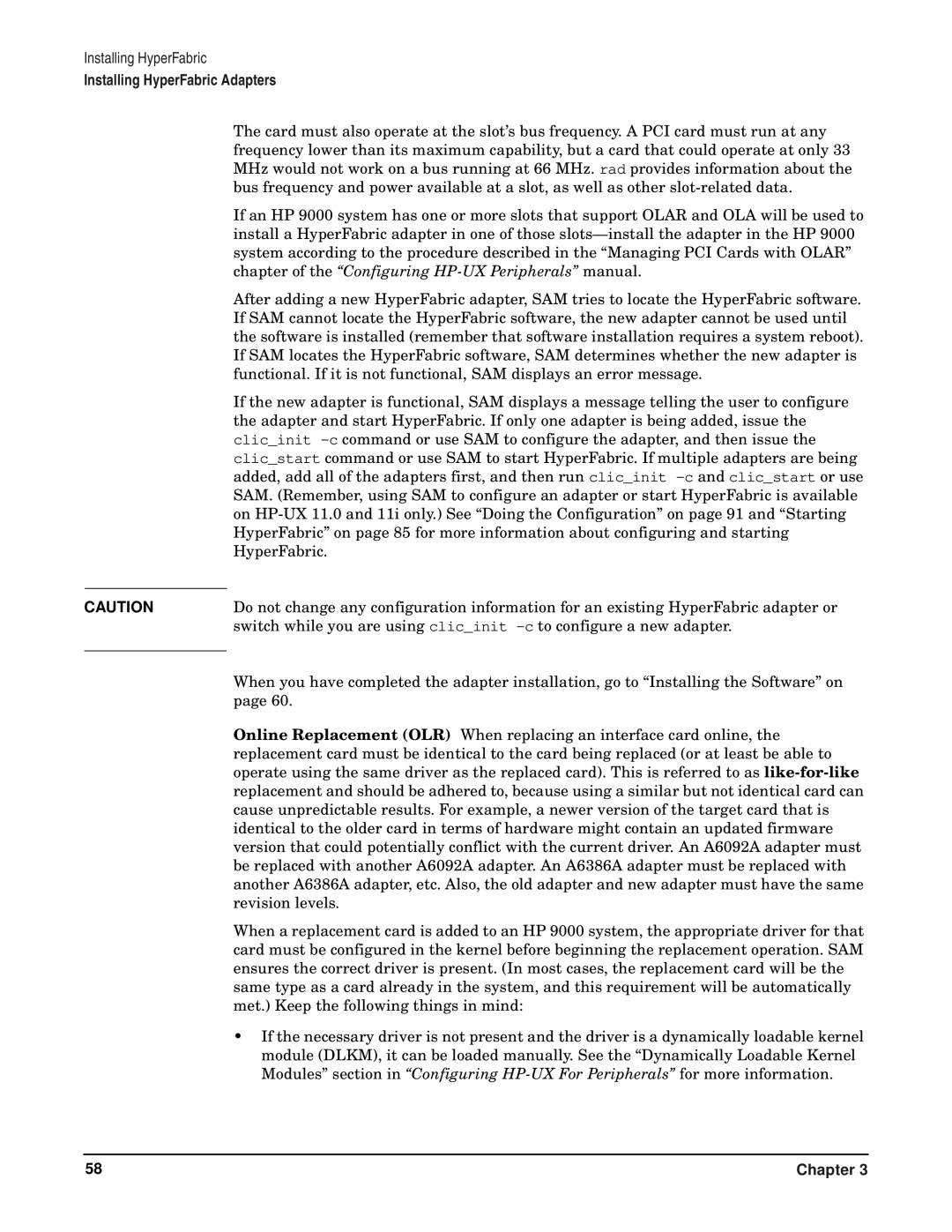
Installing HyperFabric
Installing HyperFabric Adapters
The card must also operate at the slot’s bus frequency. A PCI card must run at any frequency lower than its maximum capability, but a card that could operate at only 33 MHz would not work on a bus running at 66 MHz. rad provides information about the bus frequency and power available at a slot, as well as other
If an HP 9000 system has one or more slots that support OLAR and OLA will be used to install a HyperFabric adapter in one of those
After adding a new HyperFabric adapter, SAM tries to locate the HyperFabric software. If SAM cannot locate the HyperFabric software, the new adapter cannot be used until the software is installed (remember that software installation requires a system reboot). If SAM locates the HyperFabric software, SAM determines whether the new adapter is functional. If it is not functional, SAM displays an error message.
If the new adapter is functional, SAM displays a message telling the user to configure the adapter and start HyperFabric. If only one adapter is being added, issue the clic_init
CAUTION | Do not change any configuration information for an existing HyperFabric adapter or |
| switch while you are using clic_init |
|
|
When you have completed the adapter installation, go to “Installing the Software” on page 60.
Online Replacement (OLR) When replacing an interface card online, the replacement card must be identical to the card being replaced (or at least be able to operate using the same driver as the replaced card). This is referred to as
When a replacement card is added to an HP 9000 system, the appropriate driver for that card must be configured in the kernel before beginning the replacement operation. SAM ensures the correct driver is present. (In most cases, the replacement card will be the same type as a card already in the system, and this requirement will be automatically met.) Keep the following things in mind:
•If the necessary driver is not present and the driver is a dynamically loadable kernel module (DLKM), it can be loaded manually. See the “Dynamically Loadable Kernel Modules” section in “Configuring
58 | Chapter 3 |
